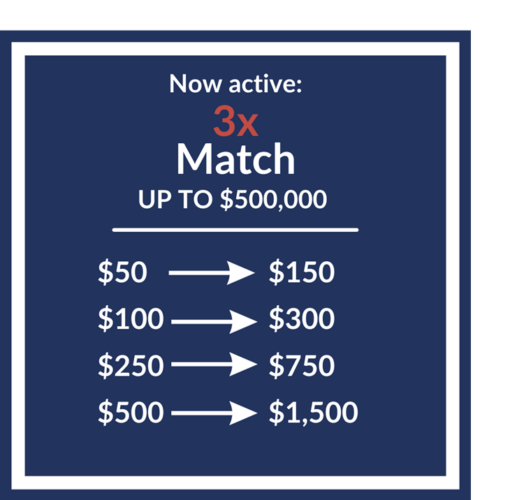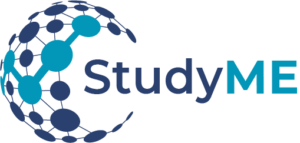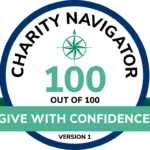Today Dr. David Systrom sits down to chat about OMF’s first clinical trial, The Life Improvement Trial (LIFT).
What is The LIFT?
Conducted under the direction of David Systrom, MD, Director of OMF’s Harvard Collaboration and Jonas Bergquist, MD, PhD, OMF’s Chief Medical Officer and Director of the Uppsala University Collaboration, The LIFT is a randomized, double-blind placebo trial that will investigate two particular drugs: Pyridostigmine (commonly known as Mestinon) and low-dose naltrexone (LDN) separately and together as a combination.
Dr. Systrom speaks about the trial setup, expected timeline of the trial, why this is an important first step, and more.
Watch the video interview here.
OMF: Thank you for joining us today, Dr. Systrom! Can you start off by sharing why the Open Medicine Foundation (OMF) research team chose lose-dose naltrexone (LDN) and Mestinon as the drugs that will be studied for OMF’s first clinical trial?
Sure. Well, I think all of us at OMF and others agree that what is really needed in the field of ME/CFS is a properly done, properly powered—meaning enough patients—appropriate duration randomized clinical trial. There is nothing really like that out there for this disease. There was a Rituximab study from Scandinavia a while back with negative results, but really nothing like this. What’s driven these particular drugs to be included in this first trial has been our years of clinical experience and what we’re hearing from our patients in the clinic.
So, I see probably 10 to 15 new patients with ME/CFS, and for that matter, Long COVID, and the overlap of the two, every week in the clinic. Over the last year and a half, we’ve heard through anecdotal evidence and many patient stories that these two drugs have been useful. In my clinical practice, and that of many others of my colleagues, we often will give both drugs. We stagger them a little bit, but we don’t know whether there’s something special about the combination or whether each of them alone is truly useful versus placebo in a properly done trial.
In a very similar fashion, we want to know about side effects, properly done, monitored by well-validated questionnaires, and with physiologic outputs. So I’ll get into that, but these two drugs have shown a lot of promise in the clinic. We’ve heard back from our colleagues treating ME/CFS, also treating Long COVID, and the overlap, that they’re useful, and we thought they ought to be the first ones tested.
Can you share how the trial is set up? How many participants are there, how long the trial will last, and when results can be expected?
Sure. I should preface things by saying that one of the wonderful things about working with OMF, but also with this patient population, is that they all seem to have their hand up in defense of doing proper research. All of our patients have been, as we have been, frustrated by inadequate diagnosis and underappreciation that this is a real disease.
And so, with that, our patients are volunteering in droves. They often bring it up in the clinic, unsolicited: “Is there anything that we can do to put our hand up and participate in any research studies that you might have?” So that’s been incredible.
So, the plan is driven in part by the statistics, meaning we have to properly power a study to detect clinically relevant changes in their symptoms or any of the physiologic outputs or biomarkers that we’re going to measure. We’re going to do 40 patients on Mestinon, 40 patients on low-dose naltrexone (LDN)—40 with a combination, and then 40 with placebo. And our statisticians tell us that this is a sufficiently large study to detect changes and not miss them because if one does too small a study, one can miss real changes that are there, and we certainly don’t want to do that.
The individual patients will be in the trial for three months. We won’t know what they get; it’s all double-blinded, placebo-controlled. Only the pharmacy at the Brigham and Women’s Hospital knows what patients are getting, and they will not break that code until the very end of the study.
We’re predicting this will probably take, at 160 patients, three months each, two major time points—at the beginning and at the end—probably two years. We hope it’s quicker than that, but we shall see. I don’t think that enrollment will prove to be limiting. So, these are our hopes.
So what we understand is that bio samples are collected before and after treatment and then they will be studied. Can you explain why this is important?
This is a very good question. So with ME/CFS, we are all keenly interested in any biomarker that might reliably identify patients with ME/CFS and differentiate them from either other diseases or from healthy individuals.
If we had a simple blood test that any physician could do in the office, that would really leverage the entire field. Then we would be able to identify patients not just based on questions and the clinical framework, but on a biomarker. That underlies all of this, but the reason it’s important to include biomarkers is that we may be able to identify subtypes of disease. There may be subcategories of disease that are identified by the biomarkers that may drive the Holy Grail in this business, which is precision medicine.
So we’re hoping at the end of the day that a patient with ME/CFS can come into a doctors office, maybe get a blood test or a urine test or whatever the biomarker is, identify what subtype of disease they might have, and which drug would be useful for them, because right now much of this is empiric. Broadly speaking, we think these two drugs (LDN and Mestinon), have promise, either alone or in combination, and I suspect we’ll find that as a result of the trial. But we also may be able to identify individuals up front based on a biomarker who are going to respond to one or the other or the combination. And this would be true for future clinical trials.
So, in a strange way, the results of treatment will inform all of us about the pathogenesis of the disease. So if a drug like Mestinon, which is thought to work predominantly on the autonomic nervous system, works in a subset of patients that we identify with biomarker X, we save a lot of time and a lot of health care dollars by identifying them up front and giving them that drug to begin with. And then we know in retrospect, yes, that’s the pathway that was contributing to their symptoms because the symptoms went away when we gave the proper drug. Ditto for low-dose naltrexone (LDN).
Have you and the OMF research team looked at what treatment trials you might take on after The Lift?
Well, I think it’s important to get this first study right, to do a proper statistically powered trial, and get some answers. Then there is a whole list of other promising medications like low-dose naltrexone and many others. Although these drugs may have promise, anecdotal reports are not proper science, so we want to prove it.
The OMF steering committee has assembled a tentative list of future trials, and I’m sure that’s going to be continued to be updated over time, and we’ll vote on it repeatedly. I think we need to get this study done first, and then yes, we’ll attack the next one.
Is it expected that the combination of Mestinon with LDN will improve post-exertional malaise?
It sure is our hope, and we’ve heard that anecdotally with both drugs, either alone or in combination. You know, this will be a little bit of conjecture, but we hope to prove it with some of the biomarkers and the results of the clinical study.
Most of us in the field believe that post-exertional malaise has an inflammatory component to it. Patients tell us when they overdo it, whether physically, cognitively, or emotionally, then they pay the price one or two days later. They feel like they have the flu. Well, what we know about the flu in a lot of infections, acute infections, is that the malaise that patients feel is very much related to systemic inflammation.
Both of these medications could potentially reduce inflammation and might also help with post-exertion malaise. Mestinon works by affecting the body’s parasympathetic nervous system, which naturally helps to reduce inflammation. We’ve seen some immediate effects on the nervous system in a small research study, and we think that with long-term use, the drug could help to decrease inflammation.
And then low-dose Naltrexone is also known to be anti-inflammatory; it tamps down the toll-like receptor and an immune pathway without immunosuppression of a patient. So both drugs have the promise of being anti-inflammatory, and therefore, I think, and also based on anecdotes and stories back from the patients, serving post-exertional malaise well.
For anyone taking Mestinon with success, what symptoms does it help with?
It’s heterogeneous. I have heard patients state that they are better with all the classic symptoms related to ME/CFS. So I have gotten feedback from patients that fatigue and PEM are better, that brain fog is better, orthostatic intolerance is better, and pain related to fibromyalgia-type pain is better. But we hope to again identify individuals who might benefit the most from these drugs with their individual symptoms.
And for anyone taking low-dose Naltrexone with success, what symptoms does that help with when we’re looking at this drug in isolation?
So same answer, really. I have heard every symptom related to ME/CFS, by the Canadian criteria for instance, improve on low-dose Naltrexone. And yes, the whole idea would be to determine whether that’s consistent across the board or whether it’s individual patients who respond, and what biomarker can we correlate with it.
Is the ultimate goal of the trial to demonstrate the effectiveness of these treatments, thereby making them more widely available to patients in doctor’s offices everywhere?
We are not the manufacturers, nor do we control the drug labeling, but based on my experience in clinical practice, I believe that healthcare providers who learn about our successes treating individual ME/CFS patients with these two drugs are receptive to the idea of off-label use.
Our goal is to expand upon this by conducting a well-designed randomized placebo-controlled trial, the results of which will be published in a medical journal widely read by those interested in ME/CFS. This is a common way for physicians, whether in training or as part of their ongoing education, to learn about new treatments. Ultimately, we aim to influence medical practice in this area.
Excellent. Well, thank you so much for taking the time today to explain more about the trial and why it’s setting an important future for OMF. We’ll let you get back to patient care because we know you still are very busy!
No worries at all. And just FYI, I am trotting down to the clinic to see a patient with ME/CFS, and we very likely will offer up this trial to her!
Oh, that’s wonderful to hear. You really are a champion for people in our community, and we just really appreciate having someone like you on our side.
Don’t forget – NOW is the time to triple your impact on our mission. Your gift will be TRIPLED and will support OMF’s exciting future of clinical trials. Hurry, the match ends on November 30, 2023!


Sign up for OMF’s StudyME to be alerted when researchers recruit for clinical trials.
Whether opportunities are near you or available virtually, we’ll alert you directly via email when researchers need your participation. Join StudyME today and contribute to the discoveries of tomorrow! Join from anywhere in the world — it takes less than 5 minutes and no personal medical information is required.



